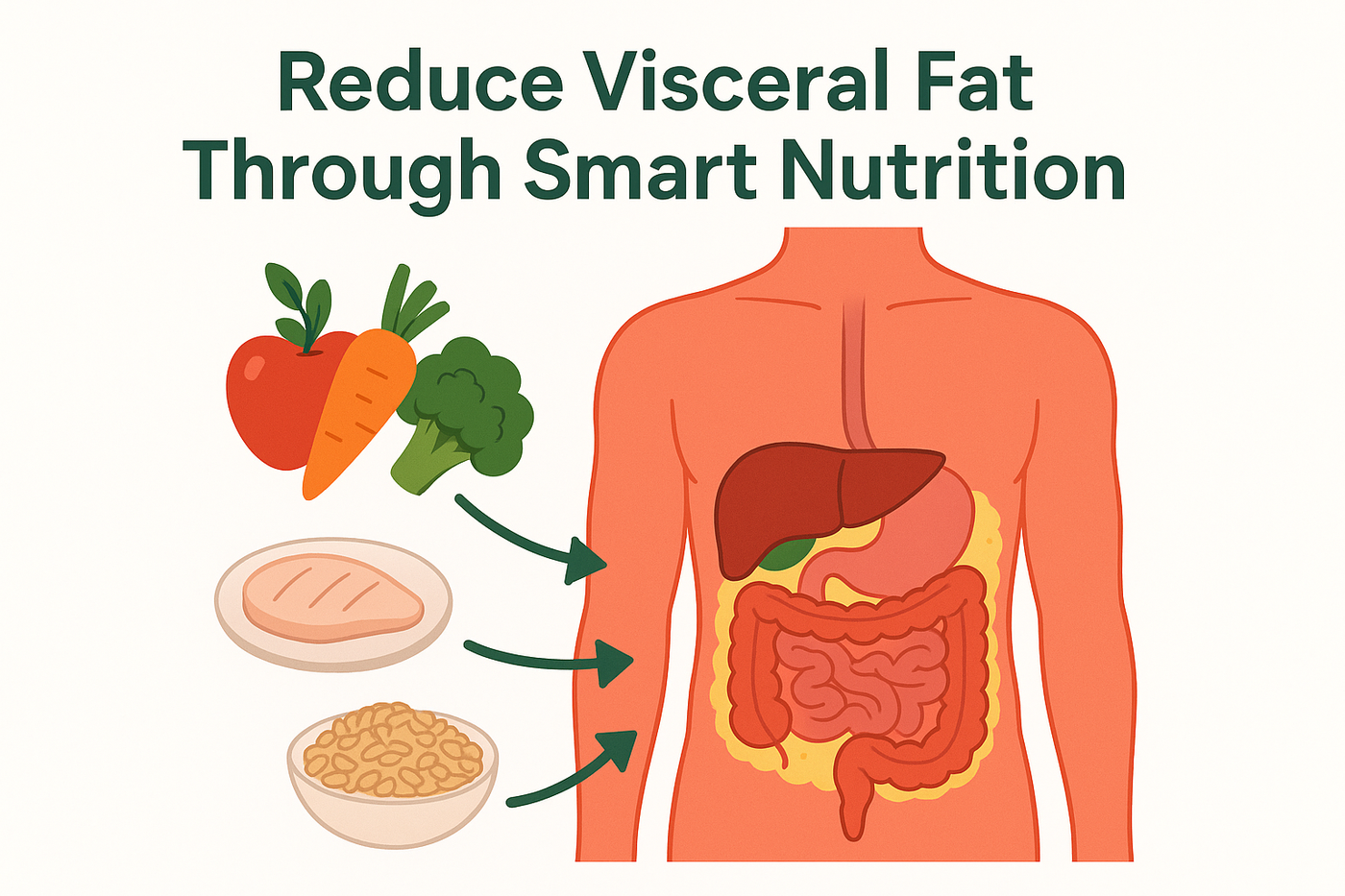What is Visceral Fat?
Visceral fat is body fat stored deep within your abdominal cavity, surrounding important internal organs like your liver, pancreas, and intestines. Unlike the fat you can pinch (subcutaneous fat), visceral fat is hidden—and it’s considered far more dangerous.
Research links high levels of visceral fat to:
-
Insulin resistance and Type 2 diabetes
-
Heart disease
-
High blood pressure
-
Certain cancers
-
Fatty liver disease
Because it’s internal, you can’t always see it—but measuring your waistline is a good indicator. Generally, a waist circumference above 40 inches for men and 35 inches for women suggests higher visceral fat risk.
How Do We Get Visceral Fat Through Our Diets?
The food choices we make directly influence how much visceral fat we store. Key dietary causes include:
✅ Consistently eating more calories than you burn
✅ High intake of added sugars (sodas, desserts, sweetened drinks)
✅ Excessive consumption of processed foods and refined carbs (white bread, pastries, chips)
✅ High saturated fat intake from low-quality sources (fried foods, fatty cuts of red meat, processed meats)
✅ Heavy alcohol consumption
These dietary patterns lead to chronically elevated blood sugar and insulin levels, encouraging fat storage around the organs.
How Can We Control Visceral Fat Through Our Diets?
Good news: visceral fat is highly responsive to diet changes! Unlike some subcutaneous fat that can be stubborn, visceral fat tends to decrease quickly when you improve your nutrition.
Key dietary strategies include:
✅ Create a modest calorie deficit
Eating fewer calories than you burn promotes overall fat loss, including visceral fat.
✅ Focus on whole, single-ingredient foods
Fruits, vegetables, lean proteins, whole grains, legumes, nuts, and seeds help regulate blood sugar and reduce inflammation.
✅ Reduce added sugar
Replace sugary drinks and desserts with water, tea, coffee (without sugar), and whole fruit.
✅ Prioritize healthy fats
Use olive oil, avocado, fatty fish (salmon, sardines), nuts, and seeds while limiting trans fats and excessive saturated fat from poor-quality sources.
✅ Increase dietary fiber
High-fiber foods help control appetite and blood sugar, and studies show fiber intake is inversely related to visceral fat levels.
✅ Limit alcohol
Excess drinking is strongly linked to increased visceral fat.
Steps You Can Take Today to Lower Visceral Fat
🗸 Measure your waist circumference to track risk
🗸 Plan meals around whole foods
🗸 Replace sugary drinks with water or unsweetened options
🗸 Choose lean proteins like fish, chicken, tofu, or legumes
🗸 Add more fiber (vegetables, fruits, whole grains, legumes)
🗸 Watch portion sizes to maintain a calorie deficit
🗸 Reduce alcohol intake or eliminate it
🗸 Stay consistent—small daily changes add up
Conclusion
Visceral fat is a silent risk factor for serious health problems—but it’s one you can absolutely tackle through smart, sustainable diet changes. By prioritizing whole foods, reducing added sugars and processed foods, and keeping portions in check, you’ll support not only fat loss around your organs but your overall health and well-being.
If you want guidance on building a personalized nutrition plan to lower visceral fat and improve your health, reach out—I’d love to help you get started!

